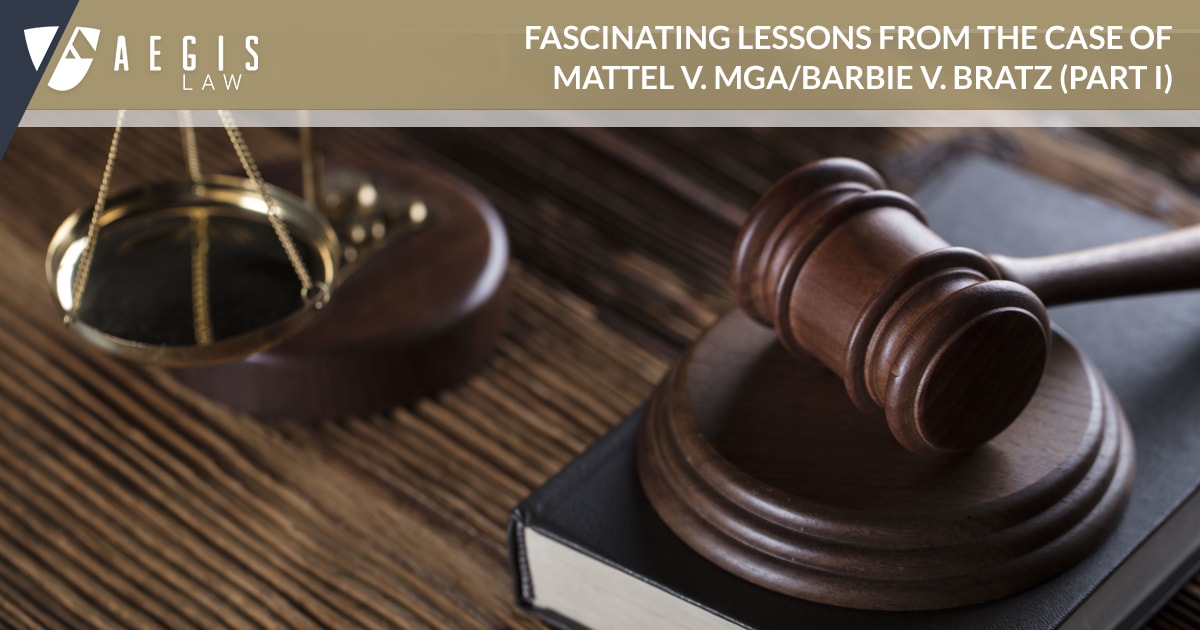Barbie is an icon. A fashion forward doll and the first of its kind marketed to American girls, Barbie is a style and toy giant. But when the Bratz dolls came along in the early 2000’s, Barbie faced some stiff competition for the first time in 40 years. Bratz dolls, with their oversized heads and sparkly makeup, were racially and ethnically diverse and had more risqué clothing. Girls loved them. Mattel rival MGA Entertainment sold more than a billion dollars’ worth of Brazt dolls in 2003. Move over Barbie!
The Court Case
Drama unfolded in the world of plastic toy dolls when Mattel discovered that the mind behind Bratz, Carter Bryant, was working for Mattel as a Barbie clothing designer when he pitched the idea for Bratz dolls to MGA. You see, when Bryant worked for Mattel, he signed a somewhat ambiguous intellectual property agreement stating that anything he created while working for Mattel belonged to Mattel. Of course, Mattel sued both Bryant and MGA, claiming that Mattel owned Bratz and sought an injunction stop them from selling Bratz dolls. Mattel argued that, because Bryant had the idea for the Bratz dolls while working for Mattel, Mattel owned that intellectual property. MGA countersued Mattel. A decade of litigation ensued.
Bryant settled with Mattel before trial, but Mattel continued its suit against MGA, accusing it of stealing Mattel’s intellectual property. A federal jury agreed and awarded Mattel $100 Million in 2008, and the district court ordered a transfer of property to the rightful owner and issued an injunction preventing MGA from marketing or producing Bratz dolls. The U.S. Court of Appeals for the 9th Circuit reversed the decision and remanded the case for a new trial.
The Employment Agreement Was Ambiguous
One of the 9th Circuit’s rulings held that the employment agreement was ambiguous and the jury should have been allowed to decide whether the agreement assigned Bryant’s ideas to Mattel. Specifically, the court found Bryant’s employment agreement ambiguous because whether the “idea” of the new doll fell within the definition of an “invention,” as mentioned in the employment agreement, was unclear. The court also found whether or not Bryant created the Bratz dolls during the scope of his employment to be ambiguous under the employment agreement. In the new trial, Mattel lost. The jury did not agree that Mattel owned Bryant’s idea.
So what is the first lesson can we take away from Barbie versus Bratz? Mattel’s employment agreement with Bryant was not well drafted. Moreover, Mattel’s employment agreements varied across the company and the toy maker failed to give employees guidance on the meaning of the agreement. If Mattel had paid more attention to expressly protecting its intellectual property in all of its employment agreements, the entire lawsuit might have taken a different turn.
Want to make sure your intellectual property is safe? We can help. Send us a message or call us at (314) 454-9100 to schedule a consultation.




